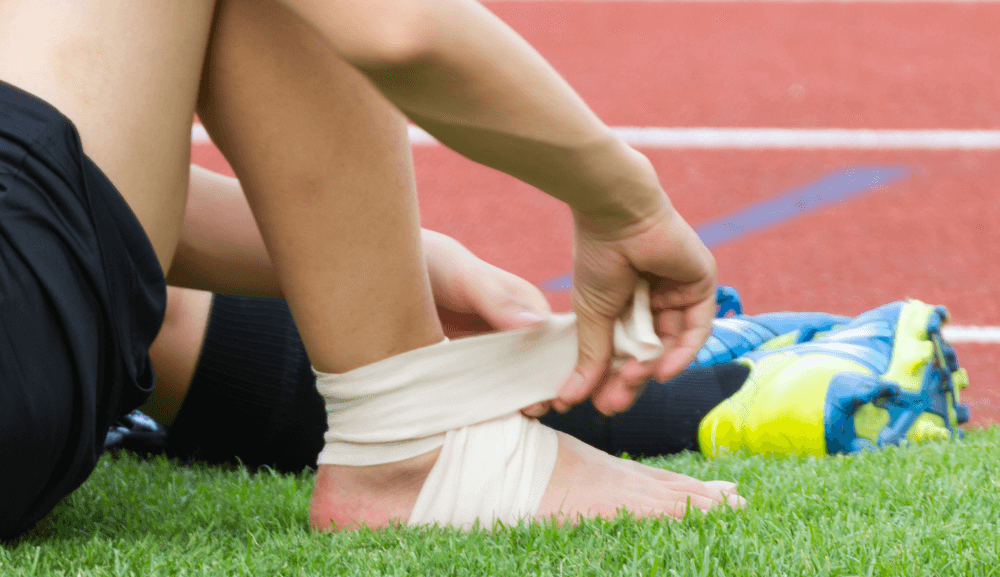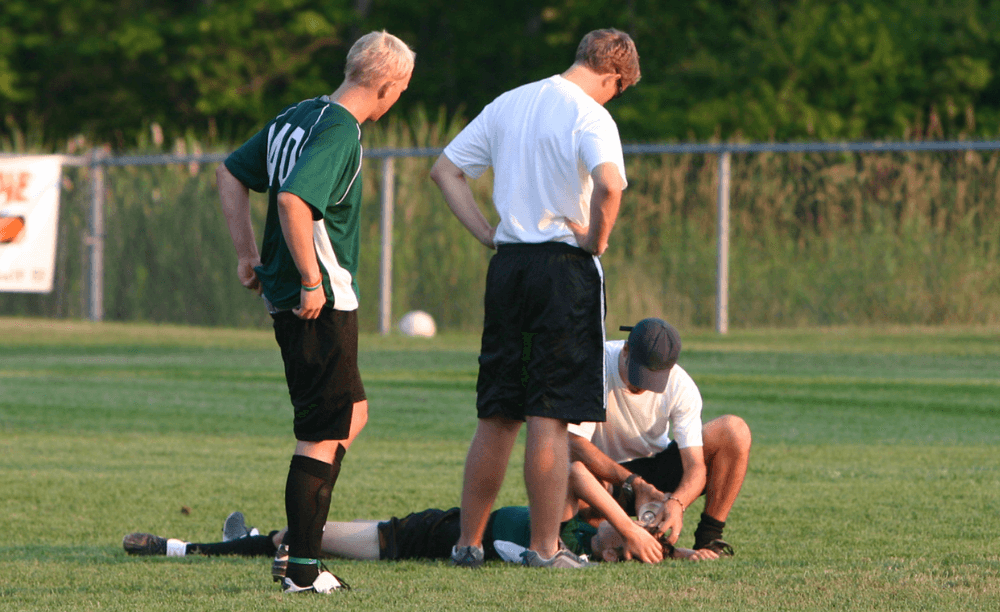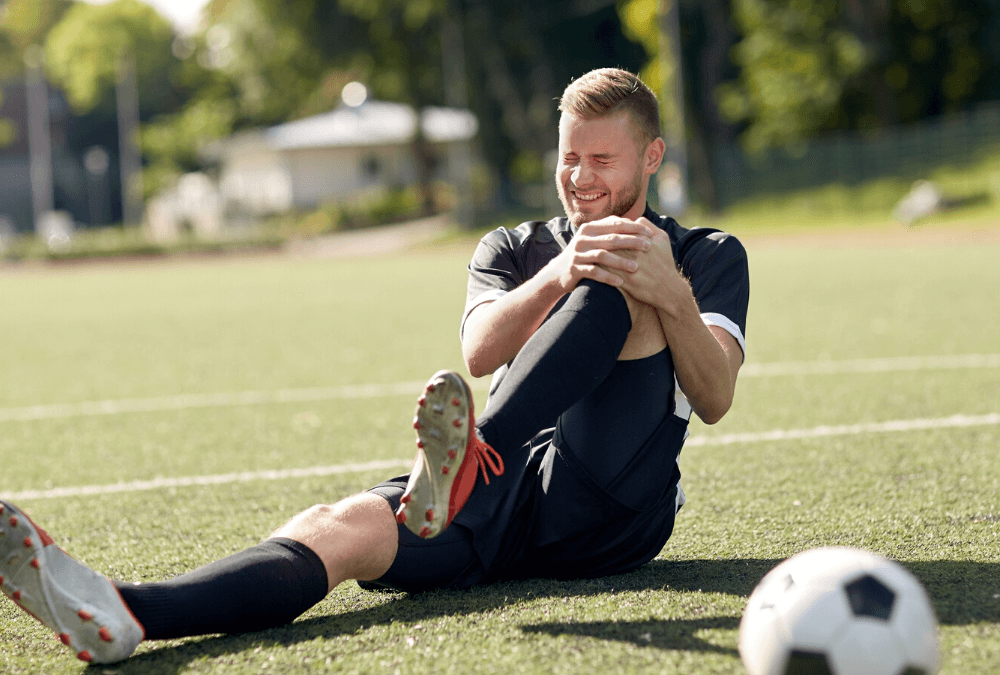Are you keeping up with the World Cup this year? The LiveWell team certainly is! If watching the experts play is making you antsy to get back on the pitch yourself, this is the blog for you. Whether you’ve joined an indoor league or are waiting for spring to get back into it, it is always important to take care of your body while playing sports. We’re here to help you prevent any soccer injuries and explain how the most common ones are treated by our team.
How to Prevent Soccer Injuries
Soccer is an intense sport that may push your body to the limit. While we’re not going to try to stop you from giving it your all, there is something to be said about remembering to focus on proper techniques to prevent yourself from being more liable to injury. As with any sort of physical activity, a proper warm-up and cool-down are essential as is wearing proper gear, avoiding uneven surfaces, staying hydrated, and taking necessary breaks and rest days. Our LiveWell physiotherapists can help by providing some stretches, strength-building exercises, and injury-prevention techniques so that you can play your best while feeling your best. Here are some of the most common soccer-related injuries to keep your eye out for.
1) Hamstring Injury
Let’s start with perhaps the most painful and common soccer injury: a torn hamstring muscle. This collection of muscles on the back of your thigh undergoes stress during the sprinting and abrupt stopping movements associated with soccer. If these muscles are too far stretched, they will become strained and tear. You can minimize initial pain with the RICE method (rest, ice, compression, and elevation) and then our physiotherapy team can gradually help your hamstring with a rehabilitation plan involving stretching and exercise to help rebuild the muscle tissue.
2) Ankle Injury
Ah, the dreaded rolled ankles that often come with playing soccer. Also known as a lateral ankle sprain, this injury occurs when your foot lands poorly or awkwardly and is rolled under your body weight. Any sort of sprinting, jumping, or kicking (especially with the top of your foot) should be done with caution. Medial ankle sprains are also common for soccer players and result from your toes being turned out while your foot is flexed upwards. We can help with pain and swelling management, joint mobility, balance training, and bracing to help heal your injury and prevent future ones.

3) Knee Injuries
Similar to rolled ankles, a torn knee meniscus also results from poor landings. It involves unnaturally twisting or turning your knee in a way that tears the cartilage and can happen with any activity that involves forceful rotation. Picture aggressive pivoting or sudden stops and turns. Any activity that causes you to forcefully twist or rotate your knee, especially when putting your full weight on it, can lead to a torn meniscus.
Perhaps the most well-known soccer injury is also tied to the knees: the tearing or rupturing of your anterior cruciate ligament (ACL). It is also one of the most serious injuries and can take the longest to heal. Again caused by a quick pivoting of direction, a torn ACL can also trigger other injuries and often requires surgery. Our physiotherapy treatment plan can help ease the pain and swelling while also gradually introducing exercises post-surgery to help you regain full movement.
Another common soccer injury is runner’s knee (or patellofemoral pain syndrome) which also involves damaged cartilage and occurs when you strain tendons or misalign your knee. You may feel pain when moving or bending your knee, usually accompanied by a crack or popping sound. There are plenty of treatment options for these knee injuries including chiropractic adjustments, physiotherapy, massage therapy, osteopathy, and/or acupuncture.
4) Concussions
Have you ever clashed heads with another player when going for a header – or even worse, a goalpost? This can lead to deep cuts as well as concussions. These brain injuries can range from mild to severe with headaches, memory loss, balance issues, dizziness, nausea, concentration problems, and blurred vision being the main symptoms. We always recommend talking to your doctor after a head collision because left untreated, concussions can be very dangerous. Rest is also crucial for post-concussion recovery and trying to give your brain the least amount of stimulation possible. The LiveWell team can create a unique concussion management plan to help you evaluate and treat your head injuries which could include gaze stabilization, balance, and habituation exercises.

5) Wrist Injuries
Another common soccer injury centres on wrist pain and usually occurs after falling on an outstretched arm. Anytime you move your wrist in an abnormal way, suddenly twist it, bend it backwards, or put it under a lot of weight, you are at risk for wrist sprains, wrist fractures, and even shoulder dislocations. If you are experiencing pain or are having difficulty moving your wrist, our team can assess and treat your injury. Since there are so many different types of wrist injuries, we can offer acupuncture, massage therapy, bracing, physiotherapy, strength exercise training, osteopathy, or a combination of all to get you back on the pitch.
Some other common soccer-related injuries include Achilles tendon ruptures and Achilles Tendinitis, back muscle pain, hernias, Bursitis, Osteoarthritis, pinched nerves, groin pulls, Plantar Fasciitis, Sciatica, shin splints, and whiplash. Whatever your injury, our team at LiveWell can create a custom rehabilitation and exercise program best suited for your needs. Please reach out to us if you have any concerns so that we can complete a diagnosis and get you on the right path toward proper healing. Reach out to our team to get started – see you on the pitch!
—
Want more lifestyle advice on how to improve your health and wellness? Contact our LiveWell Health and Physiotherapy Kitchener (Lancaster and Driftwood), Waterloo, or Baden teams for more information and to book your next appointment. You can also reach out to us by email or social media, and one of our team members will be more than happy to answer any of your questions! All of our practitioners have tips and expert guidance to help improve your health and overall quality of your life.

